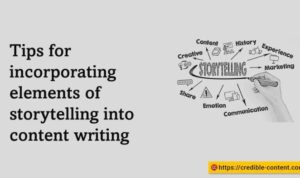Creating Engaging Content: Craft Content That Captivates Your Audience takes center stage, beckoning readers into a world of knowledge and creativity. Get ready for a journey filled with tips on audience understanding, content planning, visual elements, storytelling techniques, and interactive content.
Understand Your Audience

Knowing your target audience is crucial for creating engaging content that resonates with them. By understanding who your audience is, you can tailor your content to their preferences, interests, and needs.
Demographics and psychographics play a key role in audience understanding. Demographics include factors such as age, gender, location, income, and education level, providing insight into the basic characteristics of your audience. On the other hand, psychographics delve deeper into the attitudes, beliefs, values, and lifestyles of your audience, helping you understand their motivations and behaviors.
Tailoring Content to Different Audience Segments
- For a younger audience, such as high school students, incorporating slang, pop culture references, and relatable topics can make the content more engaging and relevant.
- When targeting an older demographic, using more formal language, addressing specific concerns related to their life stage, and offering practical advice or solutions can be more effective.
- For a tech-savvy audience, including interactive elements, multimedia content, and cutting-edge technologies can capture their attention and keep them engaged.
Content Planning and Strategy
To make sure your content hits the right spot, you gotta have a solid plan in place. Content strategy is like the blueprint for your content creation journey – it helps you stay on track, target the right audience, and achieve those business goals.
Significance of Creating a Content Strategy
Creating a content strategy is crucial because it gives you direction and purpose. It helps you understand your audience better, identify key topics to focus on, and establish a consistent brand voice. Without a strategy, you’re just shooting in the dark, hoping something sticks.
- Research your target audience to understand their needs and preferences.
- Set clear goals and objectives for your content.
- Define your brand voice and messaging to maintain consistency.
- Plan your content calendar to ensure regular and timely updates.
Steps to Develop an Effective Content Plan
To develop a killer content plan, you gotta start with the basics and then ramp it up. Here’s how you can do it:
- Define your target audience and create buyer personas.
- Conduct research to identify relevant topics and trends.
- Set measurable goals and KPIs to track your content performance.
- Create a content calendar outlining your topics, formats, and publishing schedule.
Aligning Content with Business Goals
Your content ain’t just for show – it’s gotta align with those business goals to make a real impact. Here’s how you can do it:
Align your content with key business objectives to drive meaningful results.
| Focus on creating content that supports your sales and marketing efforts. |
| Track the performance of your content against your business metrics. |
| Adjust your content strategy as needed to meet changing business goals. |
Utilizing Visual Elements

Visual elements play a crucial role in creating engaging content as they can capture the audience’s attention, convey information effectively, and enhance overall user experience. Incorporating images, videos, and infographics can make your content more visually appealing and easier to digest for your audience. Let’s dive into some tips on how to effectively utilize these visual elements and the role of design in enhancing user experience.
Incorporating Images
Using high-quality images that are relevant to your content can significantly enhance engagement. Make sure the images you choose are visually appealing, relate to your message, and are optimized for web viewing. Images can break up text, make your content more visually interesting, and help convey emotions or concepts that words alone may not be able to communicate effectively.
Incorporating Videos
Videos are a powerful tool for engaging your audience and can help increase the time spent on your content. Create engaging and informative videos that are relevant to your audience’s interests and preferences. Whether it’s a tutorial, product demonstration, or a behind-the-scenes look, videos can add a dynamic element to your content and provide a more interactive experience for your audience.
Incorporating Infographics
Infographics are a great way to visually represent complex information in a simple and easy-to-understand format. Use infographics to break down data, statistics, or processes into visual elements that are visually appealing and engaging. Infographics can help your audience grasp information quickly, retain it better, and share it more easily on social media platforms.
Role of Design in Enhancing User Experience, Creating Engaging Content
Design plays a crucial role in enhancing user experience by creating a visually pleasing and intuitive layout for your content. A well-designed website or content piece can increase user engagement, improve readability, and establish a strong brand identity. Consider factors like color scheme, typography, layout, and overall aesthetics to create a seamless and enjoyable user experience for your audience.
Storytelling Techniques: Creating Engaging Content
Storytelling is like the secret sauce of content creation, adding flavor and depth to your message. It has the power to captivate your audience, evoke emotions, and make your content memorable.
The Power of Storytelling in Content Creation
When you weave a compelling narrative into your content, you create a connection with your audience. Stories have the ability to engage people on an emotional level, making them more likely to remember and relate to your message.
- Stories help humanize your brand and create a personal connection with your audience.
- They make complex information easier to understand and retain.
- Stories can evoke emotions and create a lasting impact on your audience.
Examples of Compelling Storytelling in Marketing
Some brands have mastered the art of storytelling in their marketing campaigns, leaving a lasting impression on their audience.
- In Nike’s “Dream Crazy” campaign featuring Colin Kaepernick, they told a powerful story of perseverance and determination, inspiring audiences worldwide.
- Coca-Cola’s iconic holiday commercials are another great example of storytelling, evoking feelings of warmth and togetherness.
- Dove’s “Real Beauty” campaign used storytelling to challenge beauty standards and empower women, creating a strong emotional connection with their audience.
Structuring a Narrative for Maximum Engagement
To create a compelling narrative that resonates with your audience, it’s essential to structure your story in a way that keeps them engaged from start to finish.
- Start with a strong hook to grab your audience’s attention right from the beginning.
- Introduce relatable characters or situations that your audience can connect with.
- Build tension and conflict to keep your audience invested in the story.
- Create a resolution that satisfies your audience and leaves them with a powerful message or call to action.
Interactive Content
Interactive content is a game-changer when it comes to engaging your audience. By involving users in the content experience, you can create a more memorable and impactful interaction. Not only does interactive content keep users on your page longer, but it also encourages them to actively participate, which can lead to higher levels of engagement and brand loyalty.
Benefits of Interactive Content
- Increases user engagement and interaction
- Boosts brand awareness and recall
- Provides valuable insights into user preferences
- Encourages social sharing and virality
Interactive Content Formats
There are various formats of interactive content that you can incorporate into your strategy:
- Quizzes: Engage users with fun and informative quizzes related to your brand or industry.
- Polls: Allow users to voice their opinions and see real-time results.
- Calculators: Provide tools that help users solve problems or make decisions.
- Interactive Infographics: Present complex data in a visually appealing and interactive way.
Boosting User Engagement
Interactive elements can significantly enhance user engagement by:
- Creating a two-way communication channel between the brand and the audience.
- Increasing time spent on the website as users interact with the content.
- Encouraging social sharing as users are more likely to share interactive content with their networks.
- Providing a personalized experience that caters to individual preferences and interests.

